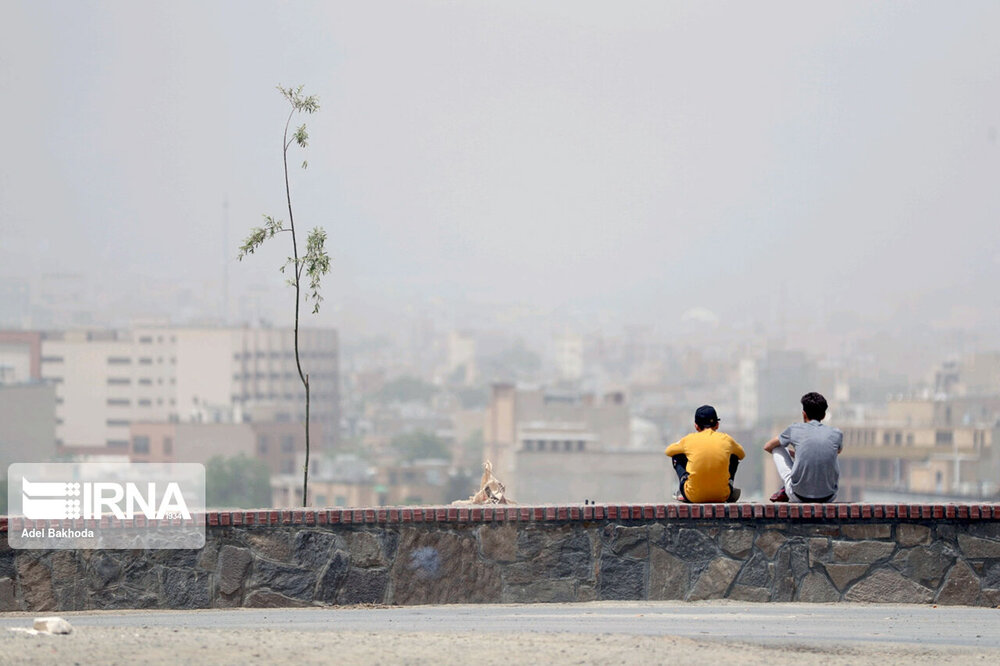INSUBCONTINENT EXCLUSIVE:
air pollution, Darioush Gol Alizadeh, head of the national center for weather and climate change affiliated with the Department of
Environment, has said.According to the report of the Ministry of Health, in 27 polluted cities of the country, about 21,000 deaths caused by
PM 2.5 have happened in the country, which caused $11 billion in damage, and 6,000 deaths related to air pollution have also been reported
in Tehran.This year, sand and dust storms were the main causes of air pollution in big cities in the summer, he stated.Over the [Iranian
calendar] year 1399 (March 2020-March 2021), 40 polluted days were reported in Tehran
Last year, also 30 days were polluted and this year, we breathed polluted air for 85 days since the beginning of the year, he further
explained.Part of the emitters in Tehran is due to the traffic of diesel cars that use regular diesel fuel, Gol Alizadeh said.In previous
years, it was said that Tehran's air pollution is due to fuel oil burning, but since 2011, these power plants are sealed and do not use fuel
oil in any way.In Tehran, there are many sources of pollutant emissions, and every car that enters the cycle, even with the new standards,
creates one or more units of pollution, he said.Some 34 million liters of gasoline with Euro 4 and 5 standards are distributed daily in
metropolitan cities and transportation hubs, which according to the plan should have reached 70 million liters by 2017, while the average
daily consumption of gasoline and diesel is 90 million liters, which reaches 105 million liters some days, he lamented.In winter, the amount
of gas consumption in the domestic sector reaches from 550 million cubic meters to 650 million cubic meters, which has increased by 20
percent, and if we have a one-degree decrease in temperature, about 25 million cubic meters can be saved, and it can easily provide a part
of the needs of power plants, he said.EmittersThere are two main types of air pollution sources, mobile sources including cars, buses,
planes, trucks, and trains, and stationary sources such as oil refineries, industrial facilities, and factories.Some 40 percent of the
emission is produced by stationary sources, while 60 percent of the pollution is generated from mobile sources.However, due to severe air
pollution in recent days in some metropolises of the country, including Tehran, Isfahan, Arak, Tabriz, etc., many experts have emphasized
the share of stationary sources in air pollution in these areas because there are signs of non-standard fuel consumption such as Sulfur
gasoline or mazut (a heavy, low quality fuel oil, used in power plants and similar applications).Even mazut consumption has been approved in
some power plants across the country.According to Article 18 of the Clean Air Law, the Ministry of Petroleum is obliged to produce fuel,
including gasoline, gas oil, fuel oil, and kerosene in accordance with approved national standards (Euro 4).Also, the share of motorcycles
in the production of gaseous pollutants is about 21 percent and in the production of suspended particles is 10 percent.In addition, every 10
carbureted motorcycles emit as much particulate matter as an old diesel bus per kilometer, which is a major cause of air pollution.In
addition to clunker motorcycles, old cars are also important factors in air pollution during fall and winter.The number of old cars in the
country of clunker vehicles because now 87 percent of the country's minibusses, 81 percent of motorcycles, 73 percent of buses, and 61
Iranian calendar year (March 2021-March 2022), Abbas Shahsavani, head of the air and climate change department of the Ministry of Health,
said.Air pollution kills an estimated seven million people worldwide every year
WHO data shows that 9 out of 10 people breathe air that exceeds WHO guideline limits containing high levels of pollutants, with low- and
middle-income countries suffering from the highest exposures.FB/MG

